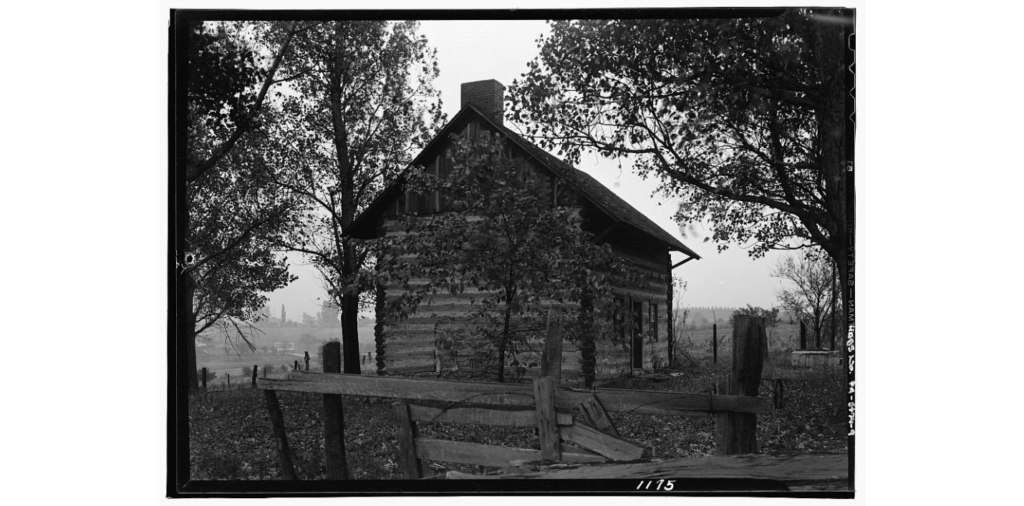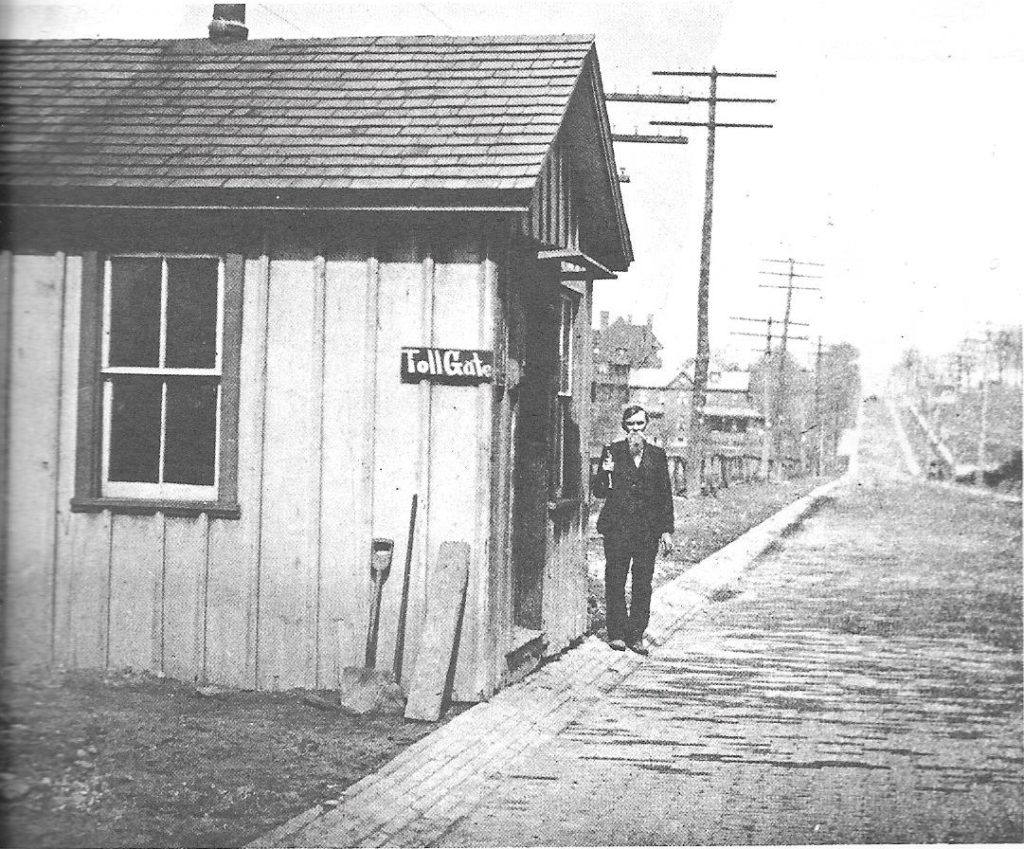On January 22, I published the first of a planned series of blog posts about the National Road. I never dreamed that it would be more than a month before I would publish the next one. Hasn’t this been a winter? Cold, snow, snow, snow – and black ice, on which I
slipped and broke my wrist. It felt amazing to get back out on the road again this week. Warm breeze, melting snow, sunshine – and the sky! After a month of looking at the same four walls, the sky looked so BIG!
Wharton Furnace
Al and I focused on the Uniontown area on this week’s drive. First, we stopped at the Wharton Iron Furnace, one of the many furnaces that operated in the area during its iron and coal heyday. One of twenty iron furnaces in Fayette County in the mid-nineteenth century, the furnace operated from 1839 to 1873, and produced cannonballs for the Civil War in the 1860s.
The Fayette County iron industry went into decline in the later nineteenth century. Pittsburgh steelmakers built bigger, more modern furnaces, and their mills were closer to railroads and cheap river transportation. The drive to the furnace, along Wharton Furnace Road, right off Route 40 near the Summit Inn, was beautiful on a sunny day in late winter. Bare trees cast tangled purple shadows on the pure white blanket of snow, and a little black creek meanders in parallel to the road for a couple of miles.


Left: Wharton Iron Furnace. Right: Pretty stream near the Furnace in Forbes State Forest
Searights Tollhouse
Next, we visited another National Road tollhouse, the Searights Tollhouse. Its design is very similar to the Addison Tollhouse that we saw on our last drive, but this one is built of brick instead of stone. The tollhouse was built near the tavern of William Searights, who just happened to be the state commissioner in charge of the roadway. Searights earned $730 a year for his job as commissioner. Between that and operating a tavern conveniently located to the tollhouse, he became one of the wealthiest men in Fayette County in the 1830s. Addison and Searights are the only remaining of the original six tollhouses along the Pennsylvania section of the National Road. The Searights Tollhouse now operates as a museum, open Tue-Sat 10-4 and Sun 2-6, mid-May through mid-October.


Left: The Searights Tavern, early 20th century. Right: Searights Tollhouse

Thanks to the rates still posted on the tollhouse, we know what this guy would have paid to transport his sheep: six cents for every 20 sheep.
The National Road in Uniontown
Our next stop was the Fayette County seat, Uniontown. At the Historic National Road Headquarters in Uniontown, we learned more about commerce along the National Road. Many stage companies competed for the fastest times between cities, and the ride wasn’t comfortable for any passengers. The road was rough, muddy and poorly graded in many places. In spite of the rough road, stage coaches sometimes covered as many as sixty-five miles in a day, changing horses about every fifteen miles in the mountains. Drivers earned about $12 a month plus room and board at inns contracted to their stage line.
In those early days of our national postal service, the government often contracted with private coach operators to deliver mail over long distances. In 1836, L. W. Stockton’s National Stage Company got a four-year contract. The contract was worth $63,000 per year, a huge sum on money at that time, but only on the condition that he could carry the mail from Wheeling at a speed of four miles per hour or faster.
A Little Uniontown History
This was our first stop in Uniontown in many years, so we had a lot to explore and a lot to learn.
Founded on the historic date of July 4, 1776, Uniontown was originally named Beesontown, after its founder, Henry Beeson. Beeson purchased the land from the Six Nations in 1768 and built the town’s first log house at the approximate site of present-day Mount Vernon Towers apartment building. Beeson built a grist mill along Redstone Creek and started selling lots.
Another early settler, Thomas Gaddis, built the area’s second log building in 1769. Gaddis served in the American Revolution and later took charge of defense for the Uniontown area. His home was also known as Fort Gaddis because it was a site for meetings and shelter in time of emergency.
Settlement increased after the end of the American Revolution, and the growing town soon boasted a cabinet maker, cobbler, blacksmith, tailor and doctor, as well as two small log churches: Baptist and Methodist.
Uniontown blossomed with the coming of the National Road, and grew further when the railroad from Connellsville and Pittsburgh came through in 1860. But the real boom started when a seam of coking coal was discovered nearby in the 1860s. By 1906, 40,0000 Fayette County men worked the coal mines.
The H.C. Frick Company alone mined over 19 million ton of coal that year, and Uniontown was the home to more millionaires per capita than any other city in the United States.
Like so many other Pennsylvania towns, Uniontown declined along with the decline of coal and steel. Its 2010 population was 10,372, about half of its 1940 peak.
When Al and I started our stroll through Uniontown’s historic downtown, it seemed unimpressive at first. Just another dreary old industrial town long past its glory days, lined with unused streetcar tracks and rows of sad, grimy nineteenth-century buildings. But, if you are patient, Uniontown slowly opens your eyes, not just to its architectural gems, but to its heroes.
Coming soon: Uniontown’s hidden charms and heroes
Sources
New Meadow Run School; Mountain Pike; Farmington, PA: Bruderhof Foundation, Inc., 1990.
https://littlebitsofhistory.blogspot.com/2012/11/searight-tollhouse.html
http://freepages.rootsweb.com/~beeson/genealogy/utown.html
https://www.nemacolin.net/places/uniontown.html
https://en.wikipedia.org/wiki/Uniontown,_Pennsylvania
https://www.loc.gov/resource/hhh.pa1916.photos/?sp=9




My husband (Charlie) was a descendant of Jacob Beeson, the brother of Henry. I have the (mostly) entire Beeson genealogy. Also of interest to the coal baron reference, Charlie’s grandfather was the caretaker/gardener for Linden Hall (then known as St. James Park) for Sarah B. Cochran, the widow of a coal baron who supplied Frick. Linden Hall is now owned by the United Steelworkers Union and is run as a country club.
Wow, Eileen that is really amazing! I’ll be publishing another post about Uniontown in the next day or two.